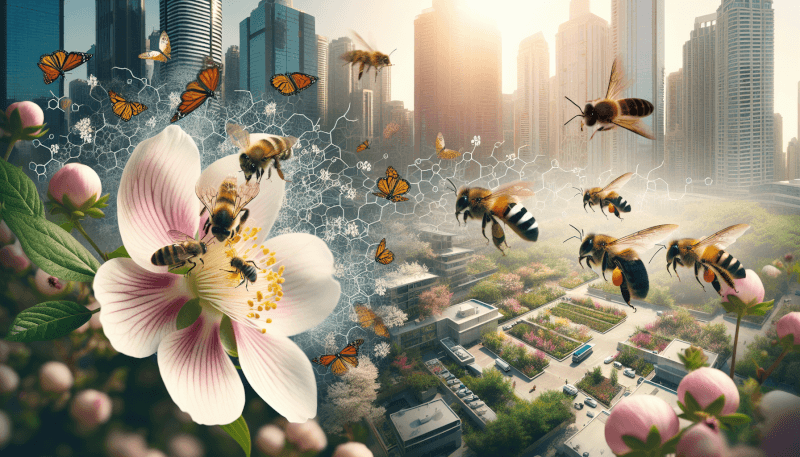Imagine transforming your urban garden into a vibrant sanctuary buzzing with life, attracting a mesmerizing array of colorful pollinators. In this article, we will explore the essential steps to create a pollinator-friendly urban garden that not only adds beauty to your surroundings but also supports the crucial role of pollinators in our ecosystem. From selecting the right plants to creating habitat features, get ready to embark on a journey that will not only benefit nature but also bring you immense joy and satisfaction. So, let’s dive in and unlock the secrets to cultivating a flourishing haven for pollinators right in the heart of your city.
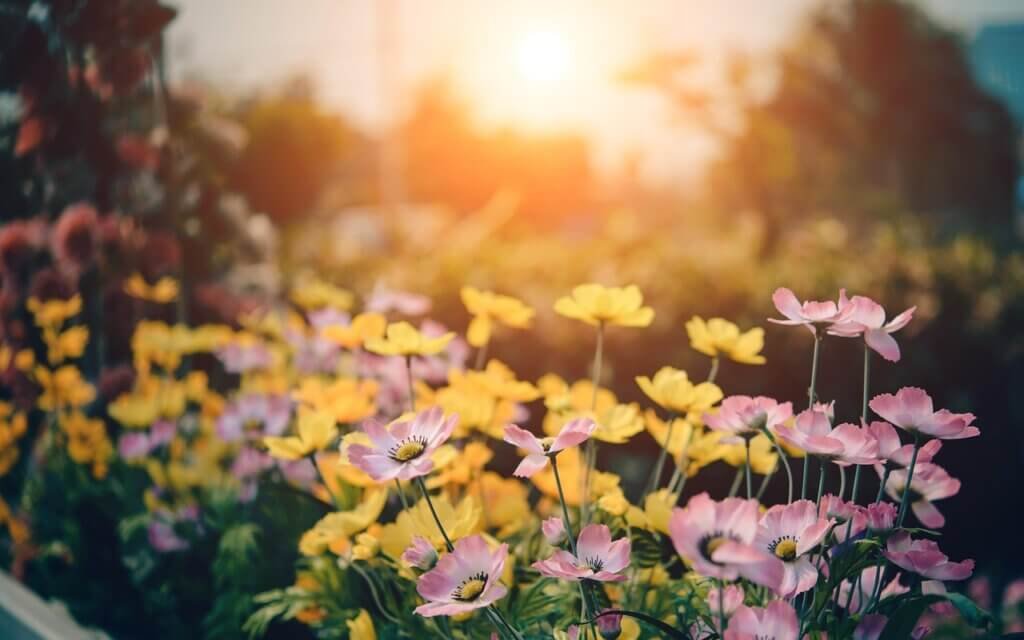
Choosing the Right Plants
Understanding the Role of Pollinators
When choosing plants for your pollinator-friendly urban garden, it’s important to understand the role of pollinators. Pollinators such as bees, butterflies, and hummingbirds play a crucial role in the reproduction of flowering plants. They help transfer pollen from the male parts of a flower to the female parts, allowing plants to produce seeds and fruit. By choosing plants that attract and support these pollinators, you are not only creating a beautiful garden but also contributing to the health and diversity of your local ecosystem.
Selecting Native Plants
One of the key factors in creating a pollinator-friendly garden is selecting native plants. Native plants have co-evolved with local pollinators and are well-suited to their specific needs. They provide abundant nectar and pollen sources that pollinators rely on for food. Native plants also tend to be more resilient and require less maintenance than non-native species. By incorporating native plants into your garden, you are providing a familiar and nutritious habitat for pollinators.
Opting for Flower Varieties with Open Structures
When choosing flowers for your garden, it’s important to select varieties with open and accessible structures. Many pollinators, particularly bees, have short tongues and need easy access to nectar. Look for flowers with shallow or tube-like shapes that allow for easy feeding. Avoid double or hybrid varieties that may have complex or tightly packed petals, making it difficult for pollinators to reach the nectar. By opting for flowers with open structures, you are ensuring that pollinators can access the valuable resources they need.
Including Plants with Different Flowering Periods
To provide a sustainable food source for pollinators throughout the growing season, it’s important to include plants with different flowering periods. By selecting a variety of plants that bloom at different times, you create a continuous source of nectar and pollen for pollinators. This is particularly important during times when fewer resources are available, such as early spring or late fall. Including a mix of early, mid, and late-season flowering plants ensures that there is always something in bloom for pollinators to feed on.
Considering the Size and Shape of Flowers
When planning your pollinator-friendly garden, consider the size and shape of the flowers you choose. Different pollinators have different preferences when it comes to flower size and shape. For example, bees are attracted to flowers with landing platforms, while hummingbirds prefer tubular-shaped flowers that they can probe for nectar. By incorporating a variety of flower sizes and shapes, you can attract a diverse range of pollinators to your garden.
Providing Suitable Habitat
Creating Multiple Layers in Your Garden
To create a truly inviting habitat for pollinators, it’s important to create multiple layers in your garden. By incorporating plants of varying heights, from ground covers to tall trees, you provide different levels of shelter, nesting sites, and foraging opportunities for pollinators. This multi-layered approach mimics the natural diversity of a forest or meadow and creates a more vibrant and biodiverse environment for pollinators.
Incorporating Flowering Shrubs and Trees
Flowering shrubs and trees are excellent additions to a pollinator-friendly garden. They provide a larger and more stable food source for pollinators and can act as important nesting and roosting habitat. Choose native shrubs and trees that flower at different times throughout the growing season to provide a continuous source of nectar and pollen. Examples of suitable shrubs and trees include dogwood, serviceberry, redbud, and native fruit trees.
Adding Different Types of Wildflowers
Including a diverse selection of wildflowers is another important aspect of creating suitable habitat for pollinators. Native wildflower species often have deep root systems and can tolerate a variety of soil conditions, making them resilient and low-maintenance choices. Wildflowers like coneflower, milkweed, goldenrod, and aster are highly attractive to pollinators and provide abundant nectar and pollen resources. By incorporating a mix of wildflowers, you can attract a wide range of pollinator species to your garden.
Including Nesting Sites
In addition to providing food sources, it’s essential to include nesting sites in your pollinator-friendly garden. Many pollinators, such as bees and butterflies, require specific conditions and materials to build their nests. Incorporate features such as bare ground, sandy soil, or leaf litter for ground-nesting bees. Install bee houses or create piles of hollow stems for cavity-nesting bees. Butterflies may lay their eggs on specific host plants, so including these plants in your garden will provide suitable larval habitat.
Providing a Water Source
Just like any living creature, pollinators also need water to survive. Providing a water source, such as a shallow dish or a small birdbath with rocks for landing, can attract and support a variety of pollinators. Be sure to keep the water clean and fresh, and consider adding pebbles or floating objects for insects to perch on safely. A water source in your garden will not only quench the thirst of pollinators but also provide a place for them to bathe and cool off.
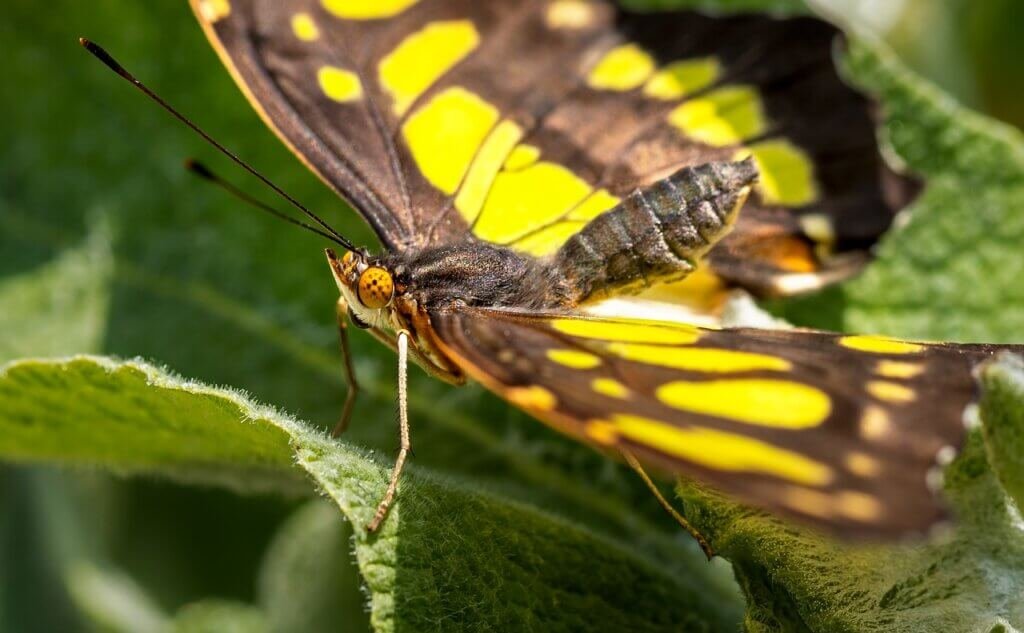
Avoiding Harmful Chemicals
Using Organic Pest Control Methods
To create a truly pollinator-friendly garden, it’s crucial to avoid harmful chemicals, such as synthetic pesticides and insecticides. These chemical substances can be toxic to pollinators and have detrimental effects on their health and populations. Instead, opt for organic pest control methods, such as companion planting, handpicking pests, or using natural predators. Integrated Pest Management (IPM) techniques prioritize the use of environmentally friendly and targeted pest control strategies, minimizing harm to pollinators.
Eliminating or Minimizing Pesticide Use
In line with organic pest control methods, it’s important to eliminate or minimize the use of pesticides in your garden. Pesticides, especially insecticides, can have long-lasting effects, persisting in the environment and potentially harming pollinators and other beneficial insects. Instead, focus on prevention and proactive measures, such as improving soil health, providing proper plant care, and using physical barriers or traps. By reducing pesticide use, you create a safer and healthier environment for pollinators.
Avoiding Synthetic Fertilizers
While fertilizers can be beneficial for plant growth, it’s essential to avoid synthetic fertilizers in a pollinator-friendly garden. Synthetic fertilizers often contain high levels of nitrogen, which can lead to an overabundance of foliage and reduced flowering. This, in turn, reduces the availability of nectar and pollen for pollinators. Instead, focus on improving soil health through natural means, such as composting, using organic fertilizers, or planting nitrogen-fixing plants. These methods provide a more balanced and sustainable source of nutrients for your plants and pollinators.
Limiting Herbicide and Weed Killer Application
When maintaining your garden, it’s crucial to limit the application of herbicides and weed killers. These chemicals can have unintended consequences for pollinators, as many flowering weeds are important food sources. If weeds become problematic, consider manual removal or targeted spot treatment instead of using broad-spectrum herbicides. By minimizing the use of herbicides, you create a healthier and more diverse habitat for pollinators.
Implementing Integrated Pest Management
Integrated Pest Management (IPM) is an approach that focuses on prevention, monitoring, and carefully considered pest control practices. By implementing IPM techniques in your garden, you can effectively manage pests while reducing harm to pollinators. IPM methods involve regular monitoring of pest populations, early detection and intervention, and the use of less toxic or non-toxic control methods. By taking a holistic and proactive approach to pest management, you can protect your plants and pollinators in a careful and sustainable way.
Implementing Design Techniques
Grouping Plants by Color and Height
An important aspect of creating a visually appealing and pollinator-friendly garden is grouping plants by color and height. Grouping plants of similar colors together can create eye-catching displays and provide a clear pollinator attraction. Bees and butterflies are often attracted to vibrant, brightly colored flowers, such as reds, purples, and yellows. Additionally, arranging plants by height creates a layered effect, providing different levels of habitat and foraging opportunities for pollinators.
Utilizing Vertical Space
To maximize the available space in your urban garden, consider utilizing vertical space. Trellises, arbors, and fences can support climbing plants, such as morning glories or honeysuckles, which provide excellent nectar sources for pollinators. Vertical gardens, using hanging baskets or wall-mounted planters, can also be used to grow flowering plants that attract pollinators. By utilizing vertical space, you can create a more dynamic and diverse garden that accommodates a wide range of pollinators.
Creating Clusters of Flowering Plants
When designing your pollinator-friendly garden, consider creating clusters or groups of flowering plants. Clusters of the same plant species or similar types of flowers can create a larger target for pollinators, making it easier for them to locate and access the nectar and pollen they need. By planting flowers in dense clusters, you can create a visually striking effect while providing a concentrated food source for pollinators.
Including Different Plant Shapes and Textures
In addition to grouping plants by color and height, it’s important to include different plant shapes and textures in your garden. Different pollinators have different preferences when it comes to feeding and foraging. By including a variety of flower shapes, such as flat, bowl-shaped, or tubular, you can attract a diverse range of pollinators with different feeding adaptations. Similarly, incorporating plants with different leaf textures adds visual interest and provides varied habitat for pollinators.
Incorporating Pathways and Seating Areas
A well-designed pollinator-friendly garden not only provides habitat and food sources for pollinators but also invites people to enjoy and appreciate the space. Incorporate pathways and seating areas to create an inviting environment for both humans and pollinators. Well-placed benches or seating areas allow you to observe and appreciate the beauty of the garden, while pathways make it easy to access and navigate through the space. By creating a garden that is accessible and enjoyable for everyone, you can foster a sense of community and raise awareness about the importance of pollinators.
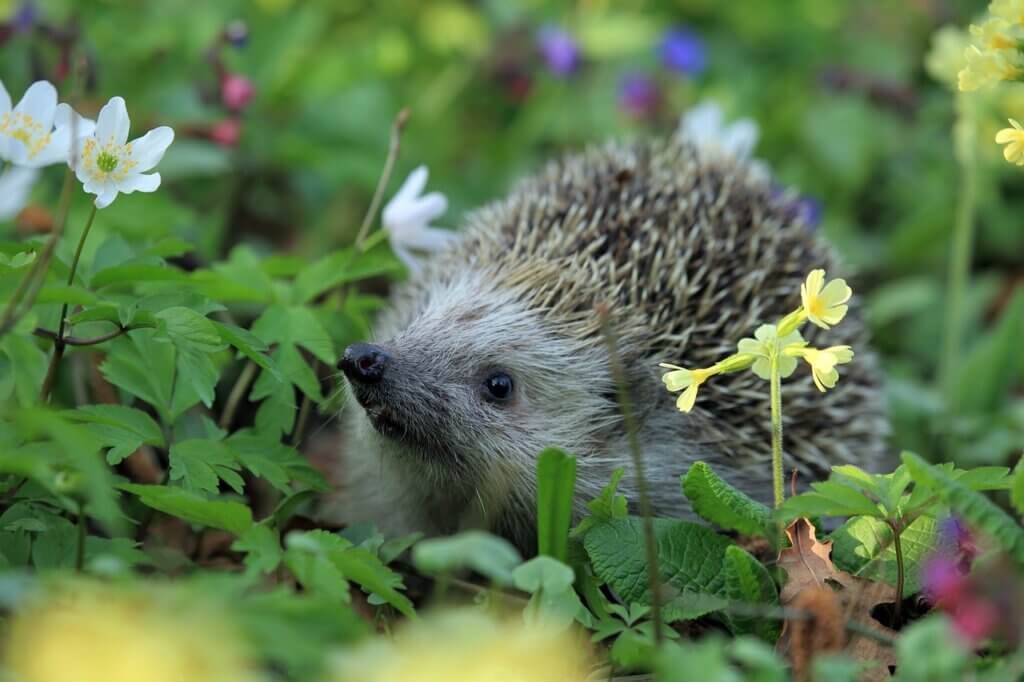
Attracting Butterflies
Incorporating Butterfly Host Plants
To attract and support butterflies in your urban garden, it’s important to incorporate butterfly host plants. Many butterfly species have specific host plants on which they lay their eggs. These plants serve as a food source for caterpillars and provide essential nutrients for their development. By including host plants such as milkweed for monarch butterflies or parsley for swallowtail butterflies, you create a butterfly-friendly habitat and increase the chances of successful butterfly populations in your garden.
Providing Nutrient-Rich Food Sources
In addition to host plants, it’s crucial to provide a variety of nutrient-rich food sources for adult butterflies. Butterflies feed primarily on nectar from flowers, so include a wide range of flowering plants that attract butterflies. Choose plants with long, tubular flowers or shallow blossoms that allow butterflies to access the nectar easily. Flowers with bright colors, particularly those in the red, pink, or purple range, are particularly attractive to many butterfly species. By planting a diverse selection of nectar-rich flowers, you can create a pollinator paradise for butterflies.
Including Shallow Puddling Areas
Butterflies also require water and minerals for their survival. To attract and provide for butterflies, create shallow puddling areas in your garden. Choose an area that receives full or partial sun and dig a shallow depression in the soil. Fill the depression with sand, gravel, and water to create a moist area where butterflies can land and sip water. The minerals and nutrients present in the water and soil will provide essential supplements for butterflies’ diet and health.
Creating Sunspots and Sheltered Spots
Butterflies are cold-blooded creatures and often rely on basking in the sun to warm themselves. Creating sunspots in your garden, such as open areas with plenty of sunlight, will attract butterflies seeking warmth. Design your garden with a mix of sunny and shaded areas to create a variety of microclimates and provide sheltered spots for butterflies to rest and seek refuge during hot weather or strong winds. By creating a diverse range of sun-exposed and shaded areas, you can accommodate the specific needs of different butterfly species.
Avoiding Butterfly Traps
While attracting butterflies to your garden is a desirable goal, it’s essential to avoid trapping them unintentionally. One common trap for butterflies is sticky traps used to catch pests. These traps can catch and harm butterflies, as well as other beneficial insects. If you must use traps for pest control, make sure to position them away from the main butterfly habitat. Regularly monitor the traps and carefully remove any trapped butterflies or other non-targeted insects to minimize harm.
Enticing Bees
Including a Variety of Flower Types
Bees are one of the most important pollinators and are vital for the health of our ecosystems. To attract bees to your urban garden, it’s important to include a variety of flower types. Bees have different tongue lengths and feeding preferences, so providing a diverse range of flower shapes and sizes ensures that different bee species can access the nectar and pollen they need. Incorporate shallow, flat, and tubular flowers to accommodate the different feeding adaptations of bees.
Creating Bee-Friendly Nesting Sites
In addition to food sources, bees also need suitable nesting sites to establish and expand their populations. Many bee species nest in the ground or in cavities, such as hollow stems or abandoned insect burrows. Incorporate features in your garden that provide nesting opportunities, such as bare patches of well-drained soil, piles of twigs or rocks, or dedicated bee houses. By providing suitable nesting sites, you can attract and support nesting bees in your urban garden.
Offering a Continuous Bloom Season
To ensure a steady supply of nectar and pollen for bees, it’s important to offer a continuous bloom season in your garden. By selecting a variety of flowering plants that bloom at different times throughout the growing season, you provide a reliable source of food for bees. Plant early-flowering bulbs and perennials for spring, followed by summer-flowering annuals and perennials. Finish with late-flowering plants that provide food for bees in the fall. By planning and staggering your plantings, you can create a continuous bloom season that supports bee populations throughout the year.
Avoiding Invasive Plant Species
While it’s essential to include a diverse range of flowering plants in your garden, it’s equally important to avoid invasive plant species. Invasive plants can outcompete native plants, reducing the availability of food sources for bees and other pollinators. They can also disrupt local ecosystems and damage native habitats. Before introducing any new plant species to your garden, research its potential invasiveness and choose only non-invasive or native options. By selecting non-invasive plants, you can safeguard the health and balance of your garden and the surrounding environment.
Providing a Mud Source for Ground-Nesting Bees
Many bee species, known as ground-nesting bees, rely on mud for constructing their nests. To attract and support these bees, provide a mud source in your garden. Create a shallow depression in the soil, fill it with damp soil, and keep it moist to create a mud patch. Ground-nesting bees will use the mud to build their nests, ensuring the reproductive success of these important pollinators. By providing a mud source, you supply an essential material for the nesting behavior of ground-nesting bees.
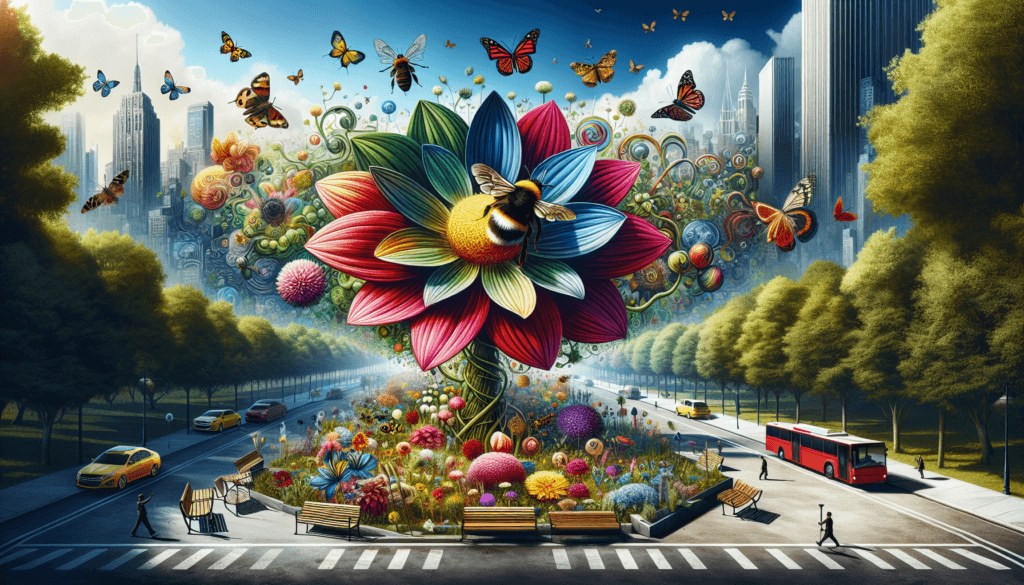
Attracting Hummingbirds
Opting for Red, Pink, and Orange Flowers
Hummingbirds are known for their vibrant colors and their affinity for red, pink, and orange flowers. To attract these energetic and beautiful pollinators to your urban garden, opt for flowers in these hues. Hummingbirds are highly attracted to bright and vivid colors, as these colors signal a high nectar reward. Incorporate a variety of flowers in shades of red, pink, and orange, and watch as hummingbirds dart from flower to flower, sipping nectar with their long, thin beaks.
Including Tubular Flowers
Another important aspect of attracting hummingbirds is incorporating tubular flowers into your garden. Hummingbirds have long beaks and specialized tongues that enable them to access nectar from the base of tubular flowers. By planting a variety of tubular flowers, such as columbine, bee balm, and trumpet vine, you provide a reliable and easily accessible food source for these avian pollinators. The shape and structure of tubular flowers are perfectly adapted to the feeding behavior of hummingbirds.
Providing Perches and Resting Spots
Hummingbirds are highly active creatures and require places to perch and rest in between feeding flights. Integrate perching spots, such as small branches or thin poles, throughout your garden to provide resting places for hummingbirds. These perches should offer clear views of nearby flowers so that hummingbirds can easily monitor their nectar sources. By providing perches and resting spots, you create an environment that supports the daily activities and needs of hummingbirds.
Including Native Trees and Shrubs
To attract hummingbirds to your garden, consider incorporating native trees and shrubs into your planting scheme. Many native trees and shrubs produce flowers that are specifically adapted to attract hummingbirds. Examples include red buckeye, firebush, salvia, and coral honeysuckle. Native plants are not only attractive to hummingbirds but also provide important food sources for other pollinators. By including native trees and shrubs, you create a more ecologically balanced and diverse garden that benefits a wide range of wildlife.
Avoiding Chemical Insecticides Near Nectar Sources
To protect the well-being of hummingbirds and the integrity of their food sources, it’s important to avoid using chemical insecticides near nectar-producing plants. Hummingbirds feed directly from flowers and can be exposed to harmful residues from pesticides. Opt for natural pest control methods and integrated pest management practices to manage any pest issues in your garden. By avoiding chemical insecticides, you create a safe and uncontaminated environment for hummingbirds to thrive.
Maintaining the Garden
Regular Watering and Soil Management
Maintaining your pollinator-friendly urban garden involves regular watering and soil management. Most flowering plants, particularly those that attract pollinators, require consistent watering during dry or hot periods. Consider installing a drip irrigation system or using soaker hoses to provide a slow and steady supply of water to your plants. Additionally, pay attention to soil health by ensuring adequate drainage, amending the soil with organic matter, and regularly testing and adjusting nutrient levels. By maintaining proper watering and soil management, you create a healthy and flourishing garden for pollinators.
Weeding and Deadheading Spent Flowers
To keep your garden vibrant and attractive to pollinators, regular weeding and deadheading of spent flowers are necessary. Weeds can compete with your chosen plants for resources and may not provide the same level of attraction for pollinators. Regularly remove any weeds that appear in your garden to prevent them from overtaking your desired plants. Deadheading, or the removal of spent flowers, encourages the growth of new blooms and improves the overall appearance of your garden. By weeding and deadheading, you maintain a clean and abundant food source for pollinators.
Pruning and Monitoring Plant Health
Pruning and monitoring the health of your plants are important maintenance tasks for a pollinator-friendly garden. Regularly inspect your plants for signs of pests or diseases and take appropriate action if necessary. Pruning can help shape and encourage healthy growth in your plants, removing any damaged or diseased branches. Trim back overgrown plants to maintain a balanced and aesthetically pleasing garden. By promptly addressing any plant health issues and conducting regular pruning, you ensure the long-term health and vitality of your garden.
Dividing and Transplanting Perennials
If you have perennial plants in your pollinator-friendly garden, it’s important to divide and transplant them as needed. Over time, perennial plants can become overcrowded or outgrow their designated space. Dividing perennials allows you to maintain their health, promotes blooming, and provides an opportunity to expand your garden or share plants with others. Transplanting, on the other hand, allows you to optimize the layout of your garden and create better groupings or color combinations. By properly dividing and transplanting perennials, you can ensure their continued success and the overall beauty of your garden.
Replacing Non-Performing Plants
In a constantly evolving garden, it’s essential to assess and replace non-performing plants when necessary. Some plants may not thrive in your specific growing conditions or may not attract the desired pollinators. If a plant consistently fails to thrive or fulfill its intended role in your garden, it may be time to replace it with a more suitable alternative. Regularly evaluate the performance of your plants, noting their health, growth, and attractiveness to pollinators. By making informed decisions and replacing non-performing plants, you can continually improve the success and impact of your pollinator-friendly garden.
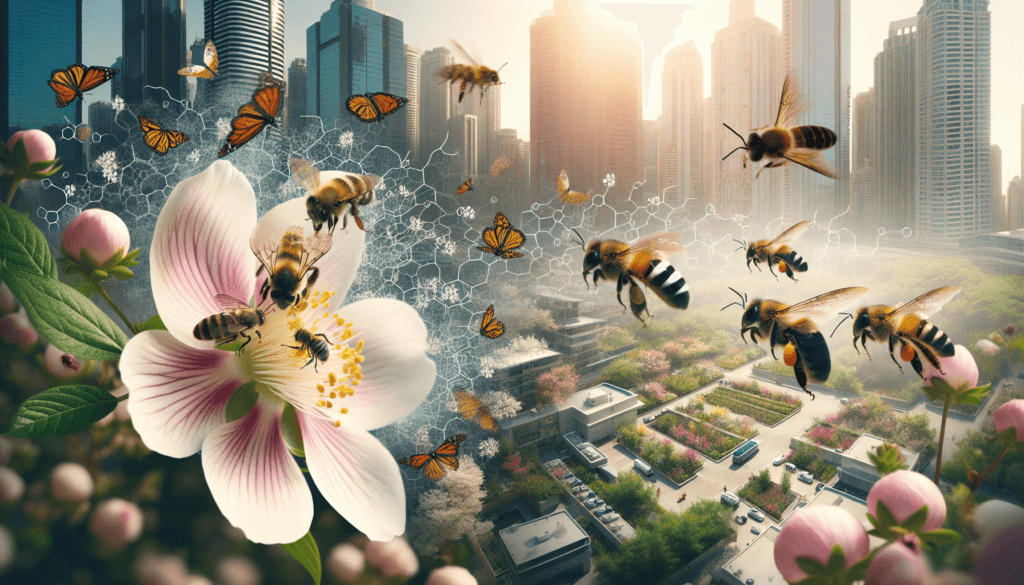
Educating and Engaging
Sharing Information with Neighbors and Community
To extend the impact of your pollinator-friendly garden, share information with your neighbors and the wider community. Informing others about the importance of pollinators, the benefits of a pollinator-friendly garden, and the specific actions they can take can inspire and motivate others to create their own pollinator habitats. Engage in conversations, distribute educational materials, and share your own experiences and successes. By spreading the word and raising awareness, you can make a positive impact both locally and beyond.
Hosting Workshops or Gardening Events
Hosting workshops or gardening events is an excellent way to educate and engage others in the creation of pollinator-friendly urban gardens. Organize gardening workshops or hands-on events where participants can learn about the principles of pollinator-friendly gardening and gain practical knowledge and skills. Offer demonstrations on planting techniques, maintenance practices, and pollinator identification. Through these workshops and events, you can inspire and empower others to take action and create their own pollinator-friendly spaces.
Collaborating with Local Pollinator Conservation Organizations
Partnering with local pollinator conservation organizations can greatly enhance the impact of your pollinator-friendly garden. Work together with these organizations to plan and implement initiatives that promote pollinator health and habitat conservation in your community. Collaborate on citizen science projects, educational campaigns, or community plantings. By joining forces, you can leverage the expertise, resources, and networks of these organizations to amplify the positive impact of your garden.
Creating Educational Signage in the Garden
Incorporating educational signage in your garden is an effective way to provide information and engage visitors. Create signs that highlight the importance of pollinators, explain the key principles of a pollinator-friendly garden, and showcase specific plant species and their benefits to pollinators. Use clear and concise language, engaging graphics, and consider bilingual or multilingual signs to reach a wider audience. By providing educational signage, you create an immersive and informative experience for visitors, enhancing their understanding and appreciation of pollinators.
Inviting Bees and Butterflies Watchers
Inviting bee and butterfly watchers to your pollinator-friendly garden fosters a sense of community and provides an opportunity for shared learning and enjoyment. Set up designated viewing areas or seating spots where visitors can observe and appreciate the diverse array of pollinators that visit your garden. Encourage visitors to bring binoculars or cameras and share their sightings with others. By creating a space that welcomes and encourages bee and butterfly watchers, you contribute to the growing community of pollinator enthusiasts and advocates.
Monitoring and Celebrating Success
Keeping Track of Pollinator Visits
One way to measure the success of your pollinator-friendly garden is by keeping track of pollinator visits. Regularly observe and record the different species of bees, butterflies, and hummingbirds that visit your garden. Monitor their activity and note any changes or patterns throughout the seasons. Tracking pollinator visits provides valuable data that helps assess the effectiveness of your garden design and plant selection. It also serves as a tangible reminder of the positive impact you are making in supporting pollinators.
Documenting and Sharing Garden Progress
Documenting and sharing the progress of your pollinator-friendly garden is a fantastic way to showcase the success and inspire others. Take photographs or create a visual diary that captures the growth and transformation of your garden over time. Share your photos, stories, and insights through social media platforms, gardening forums, or personal blogs. By sharing your journey, challenges, and triumphs, you can motivate and encourage others to embark on their own pollinator-friendly gardening endeavors.
Recording and Analyzing Data
In addition to tracking pollinator visits, consider recording and analyzing other relevant data related to your garden. Keep records of planting dates, bloom times, and the overall health and productivity of your plants. Monitor population trends of pollinators year after year. Analyze the data to identify patterns, assess the effectiveness of different plant combinations, and make informed decisions about future plantings. By collecting and analyzing data, you can continually refine and improve your garden to better support pollinators.
Celebrating Pollinator Awareness Days
Join in the celebration of pollinators and their importance by participating in pollinator awareness days. These annual events, such as National Pollinator Week, provide an opportunity to raise awareness, educate the public, and highlight the work being done to protect pollinators. Get involved by organizing or participating in local events, volunteering for community activities, or hosting your own pollinator-focused event in your garden. By celebrating pollinator awareness days, you contribute to a global effort to protect and conserve pollinators.
Learning from Successes and Challenges
Finally, take the time to reflect on your successes and challenges in creating and maintaining a pollinator-friendly urban garden. Celebrate your accomplishments and the positive impact you have made in supporting pollinators and promoting biodiversity in your community. Learn from any difficulties or setbacks you may have encountered and use them as opportunities for growth and improvement. By sharing your knowledge and experiences, you can inspire and assist others in their own pollinator-friendly gardening journeys.

